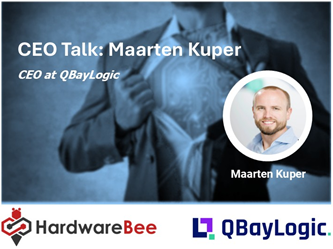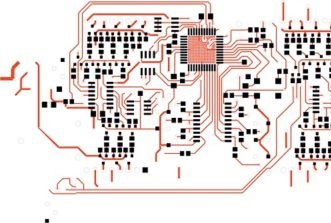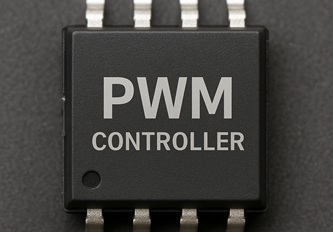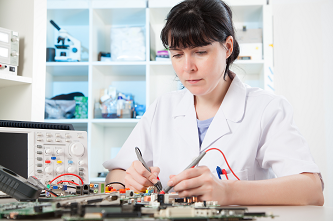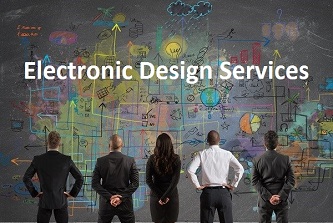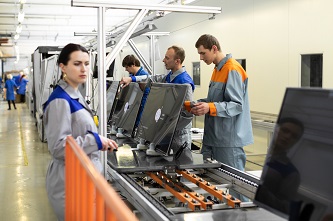This website uses cookies so that we can provide you with the best user experience possible. Cookie information is stored in your browser and performs functions such as recognising you when you return to our website and helping our team to understand which sections of the website you find most interesting and useful.
CEO interview: Dr Reza Chaji of VueReal
VueReal in Canada has raised US$40.5 million to scale up its microLED assembly technology, CEO Dr Reza Chaji talks to Nick Flaherty of eeNews Europe
The Series C funding will be used to build its production line, starting with automotive displays and moving into consumer smart glasses.
The round was led by Export Development Canada (EDC) and included participation from existing VueReal investors, including Cycle Capital, BDC Capital’s Cleantech Practice, and TDK Ventures.
RealVue’s MicroSolid Printing technology is a cartridge that takes millions of microLED devices from a foundry so that they can be used by display makers. The funding round means VueReal can scale up, and is bringing on board Giuseppe Buscemi from Micledi as Vice President of Semiconductor Engineering with extensive experience in semiconductor production facilities and deep knowledge of microLED technology,
“If you look at the overall process for microLEDs, the capital element is the fab and preparing the microLEDs for transfer. The process that we developed we can use external foundries and can scale it, and we work with those foundries that supply the microLEDs,” he tells eeNews Europe.
“Today most of the products are based on traditional flip chip technology and we use RGB qualified microLEDs, we are not modifying it but adding quality control. There are two parts to the cartridge, a substrate, which is a wafer, and the microLED integration.
“For the cartridge wafer, we can use any foundry to fab it based on our design and scale it, but we do need a clean room to assemble the cartridge and that is in Waterloo. We are upgrading our clean room with the tools to take it from pilot to scale up, and that’s what the funding is for. It’s not expensive compared to display manufacturing, its millions of dollars rather than hundreds of millions.”
This needs specialist assembly tools. “The tool provides precision alignment, and we are working with three suppliers and have verified technology from ASM, Toray and others. We are in the final stage of the tool specification and the tool production itself, we have a modified tool but the final version we will have by the end of 2025.”
“Our first target is enough cartridges for a million full HD displays a year, those are 1920 x 1080 pixels for automotive 13in displays for the central display and 12.3in displays for the console as well as transparent lighting that is less than 1mm thick with patterns that you can put anywhere in the car.”
RealView has also designed the backplanes and substrates for these displays, and developed the data analytics and machine learning to assemble the microLEDs in the cartridges into the end products.
“We picked automotive for a couple of reasons as we solve pain points in automotive, and the quantities are more manageable as the is no microLED supply chain, we are developing it. If we do it properly in automotive then when we scale for consumer it’s easier.”
“We think there are two products in consumer that benefit, one is AR smart glasses with wide viewing angles, but there is another category that can be deployed today, which is the Meta Rayban glasses. So what we are thinking is the next evolution for that is showing statistics, and for that cost and power are vital and that’s what we developed using a passive glass substrate rather than CMOS for motorcycle or bicycle helmets.”
- Plessey shows world’s brightest red microLED for wearables
- MicroLED displays maintain momentum says Yole
- Honda, Sony launch Afeela with microLEd external display
He also floats another category. “The other is wearables. We have demonstrated solar integration with 10-20 micron pixels with solar cells in between for self-powerd devices via the screen.”
“This is the art of the possibility,” says Chaji. “We have suppliers that can supply glass, and others that can supply CMOS, and our role is to put them together and qualify them. Then customers can access to the supply chain to make adoption as easy as pushing a button. We will offer this as a design kit this year as a transparent display for developers to design it in and test it, as well as development kits for AR. For wearables we are working through a partner as it is a partner’s display.”
The cartridge and the process is protected and enhanced by the IP RealVue has developed. “There are four areas of IP for the process, the cartridge, how to prepare the backplane for printing and for the tool and we use a lot of data analytics, we collect a lot of data from the process and the tool uses that to improve the process,” he said.
“We would license our IP for the backplane and the tool and people can pay for the data analytics to optimise the design. The cartridge by itself will not give them the result that they want, the data we send is a big part of it. The machine learning is based on the LED structures from the foundries. “As you scale with millions of cartridges and billions of microLEDs it’s a perfect problem for machine learning,” he said.
The current funding should see the company thorough to break-even. “We have a chance to break even but as we hit our milestones the demands for scaling will push us to another round, and depending on the IPO market, we might look at that route.”
How this rolls out in the future will also impact on future funding, which may include its own large scale packaging plant.
“We will put our systems in the foundries so they can provide an end to end solution, or establishing a packaging facility, that’s what we are still discussing for 2027,” he said.






